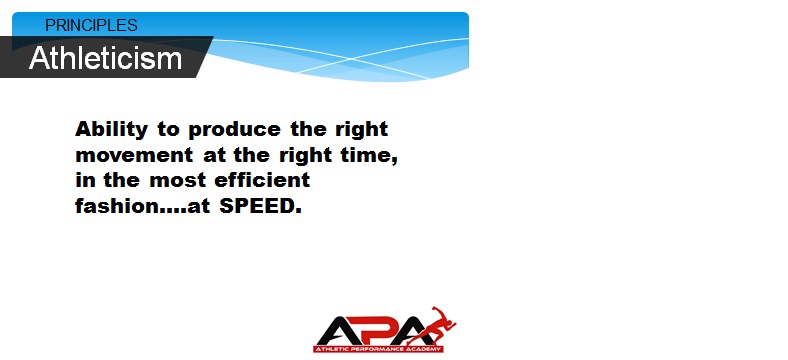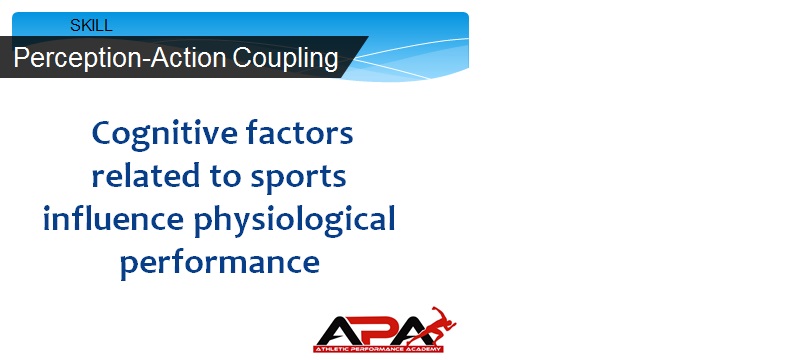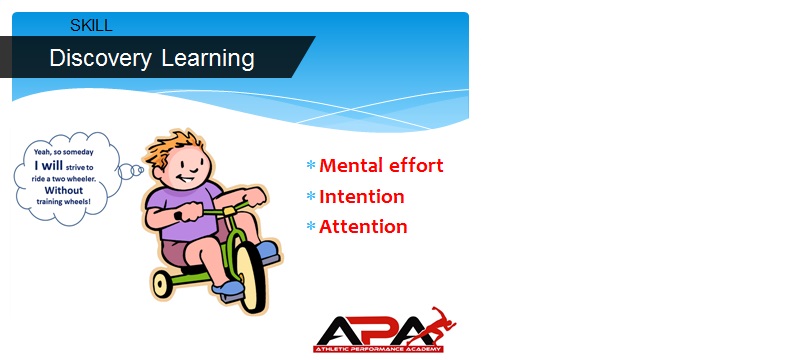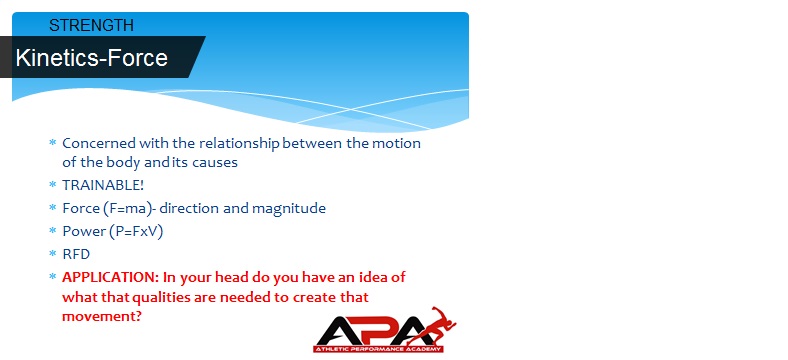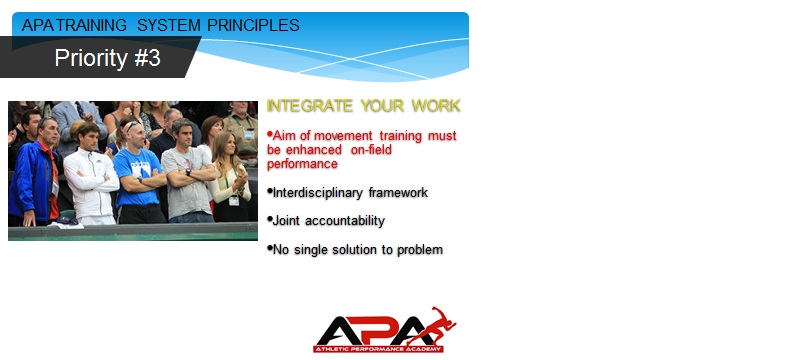Speed, Agility & Quickness Training for Sports Workshop Review
For those of you who were at the recent workshop as promised here is a review of the day. We tried to get through a lot of topics so it’s probably a good idea to take stock of what we went through by reading this Blog. For the first of our two part installment I will go over the key messages from the presentation. In the next installment I will go over the practical exercises.
For those of you who weren’t there we had 14 attendees, 10 of whom were Tennis Coaches, 2 who were Tennis/S&C coaches and 2 sports studies undergraduate students who are aspiring S&C coaches. Therefore, the context for this presentation was the sport of Tennis! It was a 3 hour workshop and we started with an hour presentation.
Presentation
For me the key outcome of the presentation was to take the Tennis coach into the world of the S&C coach and get them to see human movement through the lens of an S&C coach. The great thing about working with sports coaches is that they will help us to keep focused on the bottom line, getting an improvement in performance where it counts, on the sporting arena, in this case the tennis court. And this means that we need to make sure that our physiological adaptations will actually positively transfer to improved sports performance either immediately or at some point in the future.
Equally we need to help the sports coach realise that there are a number of ingredients that go into helping an athlete realise their body’s full potential to express their athleticism, and not all of the reasons why an athlete may appear to move poorly on the court have to do with a lack of basic speed and power.
So I talked about efficiency and explained that two key ingredients we need to produce efficient movement are:
1. Suppleness
2. Skill
Suppleness:
We talked about how if athletes have limitations in mobility that they will be unlikely to achieve the most desirable body positions to efficiently and effectively move. I showed the example above of an athlete carrying out an aggressive lateral cut and saying how important it was to have ankle, hip and thoracic spine mobility. Also, remember that proprioceptive stability is only effective at the ‘normal’ length-tension state in the muscle so if you force the body to get into a position (as can happen at speed in dynamic situations) your proprioceptors in the muscle could be compromised.
Skill:
I wanted to make the point that strength & conditioning coaches can sometimes be guilty of focusing on physiological adaptations as a means to an end and will see it as the sports coaches job to ‘transfer’ those qualities to the sports field. I feel that skill is an important biomotor ability that S&C coaches can also develop and I broke it down into:
1. Reaction speed
2. Balance
3. Coordination
If you think about the cycle of hitting a shot in tennis it ALWAYS starts with an action in response to something perceived in the environment. You act or ‘react’ to the movements of the opponent and the ball, you then run to stop and hit the ball in a balanced position (or unbalanced position) and then have to time the segments of the body’s kinetic chain to produce the force (stroke production) at the right time. The Tennis coach is the best person to develop the skills of reaction, balance and coordination as they relate to hitting the ball.
Having said that, even though skill is traditionally thought of as the domain of the sports coach targeting these biomotor abilities in S&C sessions makes it easier for athletes to acquire the skills of their sport. We are assisting the athlete to better organise their bodies by developing their senses especially vision, and proprioception.
Reaction speed is traditionally thought of as the precursor to quickness. It can be reactions which involve whole body movement such as a short sprint to chase a ball, but equally it can be the quick reflex action to duck when something is coming towards you, or the quick clap of your hand when you hear the coaching command. It’s about training an immediate reflex (such as a fear response to danger) or train a response to the information in your environment. The thing that makes expert performers appear so fast is they have trained this skill to a level where they can ‘act’ in anticipation rather than ‘reacting.’
Dynamic balance (stability) is reflex driven hence why balance exercises build upon postural corrective exercises. As well as doing all the physio type ‘activation’ exercises to correct poor static posture we need to do lots of jumping and landing and running and stopping to develop an ability of the proprioceptors to help us manage the body’s constant shifts in centre of gravity during dynamic tasks.
Coordination is focused on the timing of the movement to get the correct body parts to fire in sequence. Remember that every sport has a unique motor programme (technique) that is built on a basic coordination foundation. We can perform get the athletes to perform all sorts of movement puzzles that require good timing such as running to jump and catch a ball in the air or performing sequences with the feet and hands.
Discovery Learning:
I finished discussing skill by making the point that these qualities are REFLEX DRIVEN meaning they are developed in response to changes in the landscape of the environment. I used to believe that my role as a coach was to make my athletes look good; now I believe it is to challenge them to take them to the point where they struggle. Beginners will be fine to start with predictable and pre-planned movements because they will bring their own inherent unpredictability to the party. Think of the task of riding a bike going from doing it with stabilisers to doing it without. But as soon as possible take the stabilisers off and let them discover how to solve the movement problem. This is a metaphor for good coaching practice!
Challenges like this will require Mental effort. There is a clear Intent to stay on the bike and the Attention should be kept on external focuses such as avoiding obstacles. This is called ‘Discovery Learning.’ The opposite is known as ‘Teaching’ and would focus on internal factors such as where to hold the handles, how to shift your weight on the bike and how fast to pedal etc. There is a place for both. I make a case for doing more learning and less teaching.
Strength:
Kudos goes to Duncan French who put me onto this. We know that perhaps more than any other factor, strength is the biggest player when it comes to being athletic and specifically being fast. Force into the ground is what causes acceleration (A=F/m) so bigger forces at the same body mass cause bigger accelerations! You need force to overcome your own inertia but you also need even more force to overcome your own momentum and stop! The qualities of force and rate of force development are where the S&C coaches really can take the lead on.
Just remember, those adaptations need to help develop better performance on the sporting arena somewhere down the line.
Inter-disciplinary Team Integration:
And leads nicely to my last point and that is something that I think we should be clear on; how we work together to develop athleticism that actually transfers onto the court. I think there needs to be an honest assessment of the skills that each member of the team brings to the party. Some S&C coaches have a very vast sport specific knowledge base (and consider themselves a sport specialist), others may be limited in their technical understanding of the sport. This works for Tennis coaches too; some have different levels of technical knowledge of their sport and different levels of S&C knowledge. At the end of the day there is no single solution, every team and athlete brings different challenges. But there needs to be joint accountability and the best interventions are always the ones that are followed through on together.
Louis Cayer said it best, when he said that, ‘a Tennis coach doesn’t need an S&C coach to make a tennis player move well on the court for one game. But they need them to make them move well on the court for a match, a tournament and a career.’


